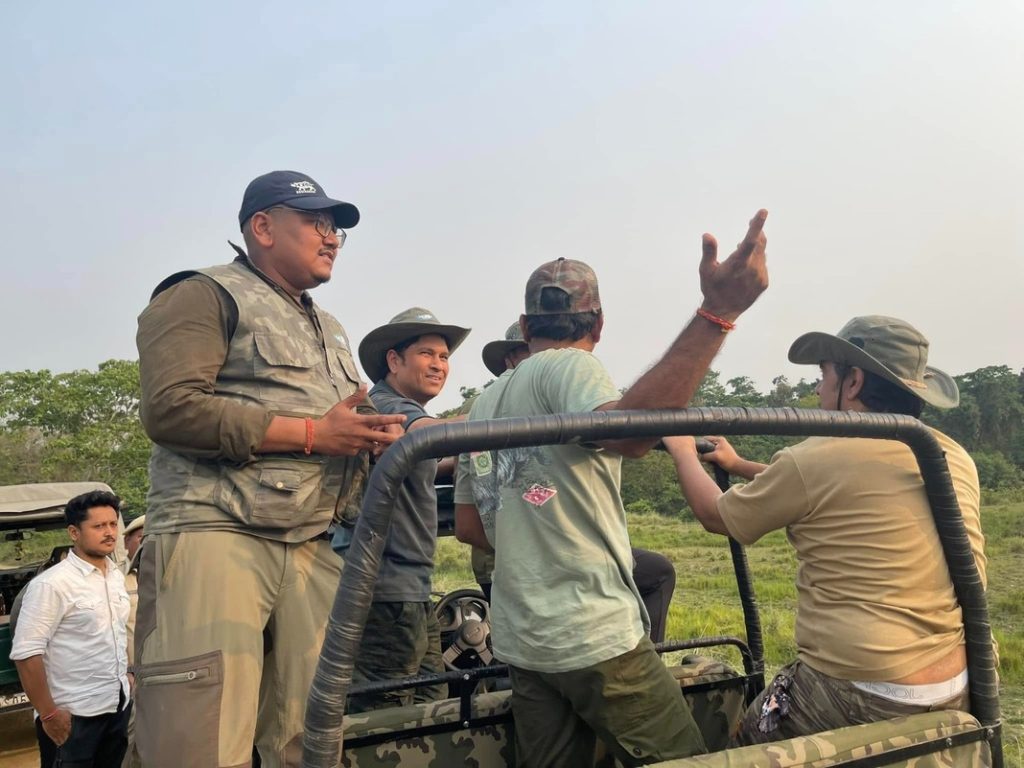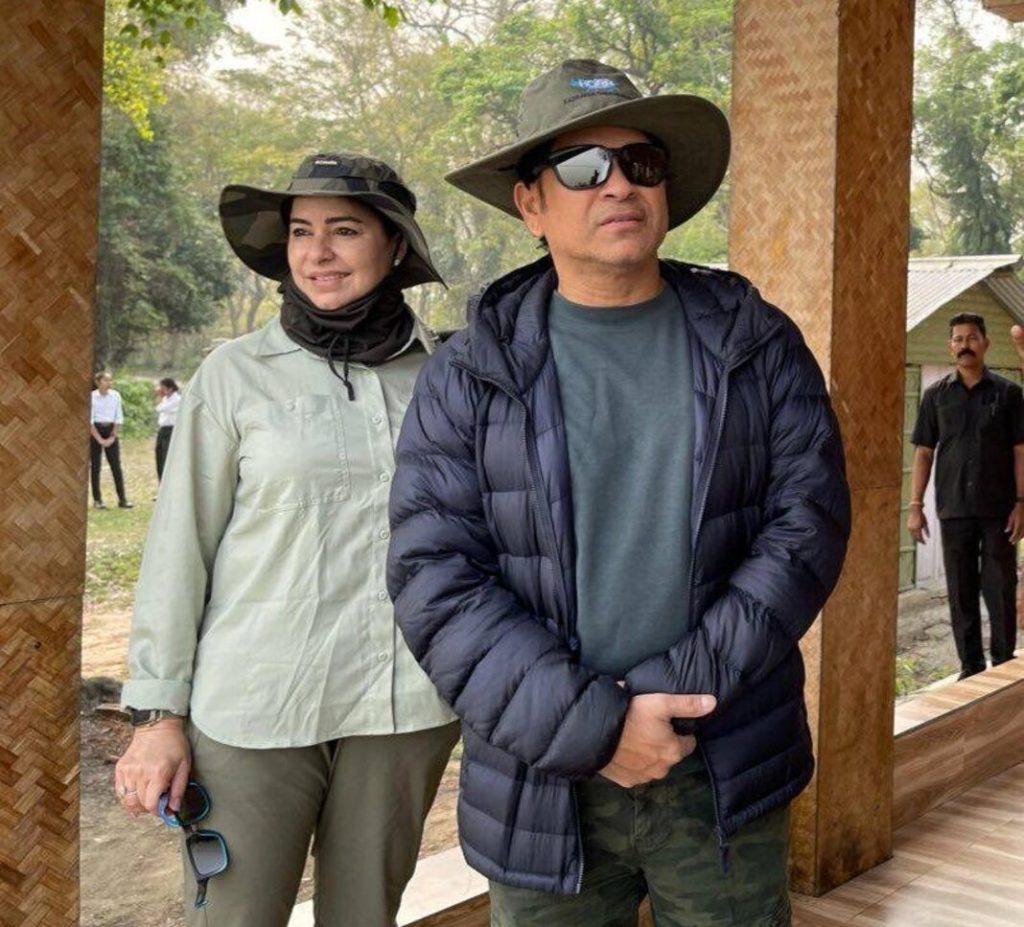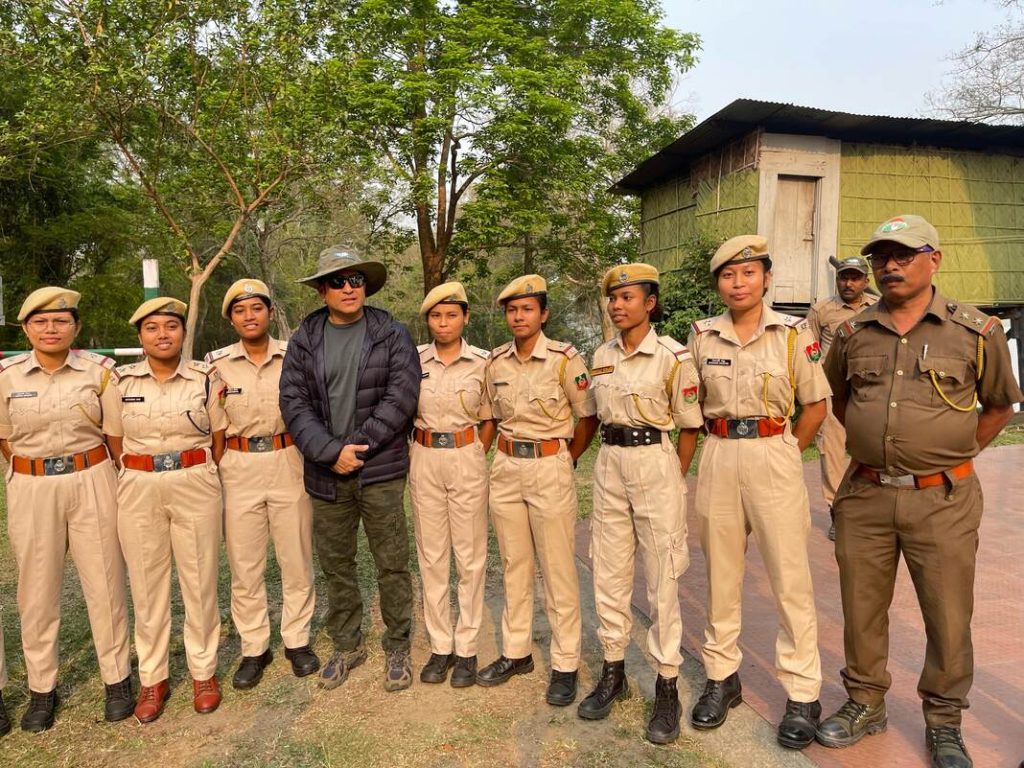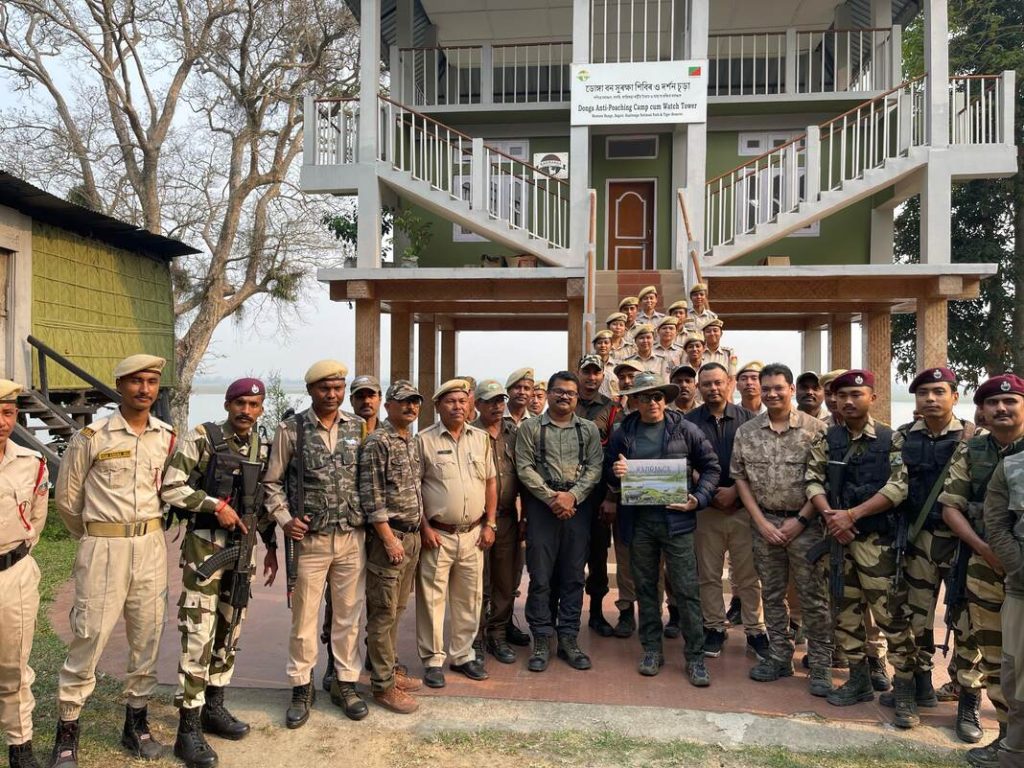
Guwahati, April 8: Cricket icon Sachin Tendulkar paid a memorable visit to Kaziranga National Park and Tiger Reserve on Tuesday, bringing national attention to one of India’s most treasured wildlife sanctuaries. The trip wasn’t just about admiring nature — it was a day that blended conservation, community engagement, and a spotlight on Assam’s rising sports talent.

Kaziranga, a UNESCO World Heritage Site, is globally recognized for its thriving population of the Greater one-horned rhinoceros and a biodiverse ecosystem that includes Bengal tigers, Asian elephants, wild water buffalo, and swamp deer — collectively known as the “Big Five” of Kaziranga. The park also supports rich birdlife, with its wetlands designated as Important Bird Areas (IBAs), vital for migratory and resident waterbirds.

Tendulkar began his journey in the Western Range (Bagori), where he soaked in the natural beauty and learned about daily operations from forest officials. At Dunga Camp, he met with frontline staff and Van Durgas — an all-women unit of forest guards known for their grit and commitment. His visit there was more than symbolic; it was a morale boost to the teams often working in challenging and dangerous conditions to protect the park’s wildlife.
Later, in the Central Range (Kohora), Tendulkar climbed up to the Daflang Tower, which offers panoramic views of Kaziranga’s wetlands. During an afternoon safari, he was fortunate to spot a Bengal tiger — a rare and thrilling experience even for seasoned wildlife enthusiasts.

He also stopped by the Karasin Anti-Poaching Camp and Pilkhana, where he met mahouts and the elephants they care for. These elephants play a crucial role in patrolling the park’s dense areas that are otherwise inaccessible. Tendulkar’s genuine curiosity and respect for their work made a lasting impression on the camp staff.
Throughout his visit, the cricket legend praised the efforts of conservationists and forest officials, acknowledging the dedication it takes to protect such an ecologically critical area.

But the visit wasn’t just about wildlife. It was also a nod to Assam’s emerging talent in sports. Tendulkar recognized the achievements of athletes from Golaghat district — home to a growing number of national-level sports figures. Uma Chetry, hailing from Kandulimari village in Bokakhat, became the first Assamese cricketer to be selected for the Indian women’s national team. Alongside her, Jintimani Kalita from Mangaldai is carving her place on the national stage.
Assam’s sporting spirit doesn’t stop at cricket. Golaghat is also the home district of Olympic bronze-medalist boxer Lovlina Buragohain and Nikhamoni Bora, the state’s first certified female sailor — both paving the way for future generations.

Tendulkar’s presence in Kaziranga brought two worlds together — conservation and sport. His visit served as an important reminder of how deeply connected nature and community are. And by recognizing local heroes, he reinforced the idea that talent, whether on the field or in the forest, deserves visibility and support.
For Assam, the day was a celebration — of its natural wealth, its unsung heroes, and its young dreamers.’





